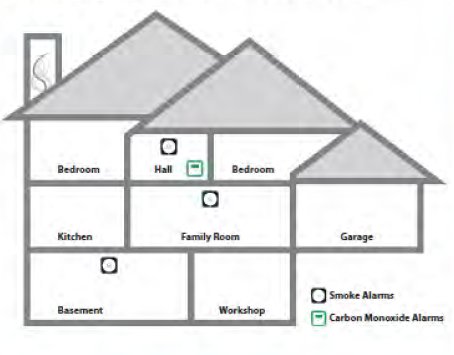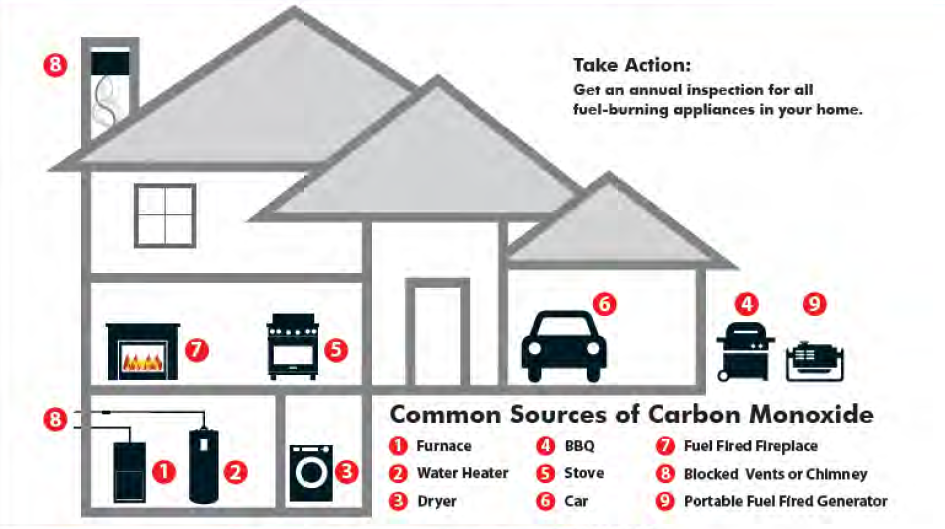Halton Hills provides comprehensive fire safety and prevention information, emphasizing the importance of education to prevent fires. The resources cover topics such as smoke alarms, carbon monoxide alarms, fire escape planning, and general fire prevention measures, ensuring residents are well-informed and prepared.
Fire safety brochures |
| Below are fire safety brochures available for download in the Acrobat PDF format.
For more fire safety information, please visit our Fire and Public Safety Education page. |
Working smoke alarms save lives |
|
By properly selecting, placing, testing and maintaining your smoke alarm, you will greatly increase your chances of surviving a home fire. When you head to the store, you'll find there are many different types of smoke alarms on the market. There are battery-operated detectors and others that run on electricity. There are "ionization" sensor smoke alarms and "photoelectric" smoke alarms. No matter what type of smoke alarm you purchase, make sure it is approved by an independent testing laboratory, such as Underwriters Laboratories Canada (ULC) or Canadian Standards Association (CSA).
Remember! Your vacation trailer or cottage needs a smoke alarm too! Working smoke alarms save lives |
Put them up |
|
Installing a smoke alarm is simple. A screwdriver and a drill are all you need to install a battery-operated smoke alarm. For smoke alarms that plug into an electrical outlet, be certain to use a restraining device so the plug can't be accidentally jarred loose. Smoke alarms can also be hardwired directly into your home's electrical system. A qualified electrician should do Hardwire installations. Never connect a smoke alarm to a circuit that can be turned off by a wall switch. Always follow the manufacturer's installation instructions and be sure your smoke alarms are held securely in place. Because smoke rises, smoke alarms should be mounted high on a wall or on the ceiling.
Batteries
TestingTest your smoke detectors at least once a month, following the manufacturer's instructions. Both battery-operated and electric smoke alarms become less effective with age. If your smoke alarm does not respond to the recommended test procedure (usually pressing a "test" button), change its batteries. If it still does not perform, replace it. CleaningFollow the manufacturer's instructions for cleaning your smoke alarms. Cobwebs and dust can generally be removed using a vacuum cleaner attachment. If you are doing work around a smoke alarm that could send dust into the air, cover the smoke alarm (don't forget to remove the cover when you're through). Never paint any part of a smoke alarm. Detect and protectOnce your smoke alarms are up and running, make sure everyone in the household is familiar with the sound of the alarms and that they can be heard behind closed bedroom doors. Get out and stay out. Never return to a burning building. |
Carbon Monoxide Prevention |
|
In Ontario, over 65% of all injuries and deaths due to carbon monoxide occur in homes. Many homes in Ontario have on average 4-6 fuel burning appliances that produce carbon monoxide including a fireplace, gas dryer, stove, water heater, portable fuel heater, and furnace. |
Home safe |
|
In-home consultation is available to residents to help address and solve problems relating to smoke alarms, carbon monoxide alarms, fire escape planning and general fire prevention measures. All members of the family are encouraged to be a part of this information sharing process. Contact the HHFD Public Education Division. |
Car seats |
|
For further information, please go to the Halton Region Seat Safety website and Car Seat Coalition. |




